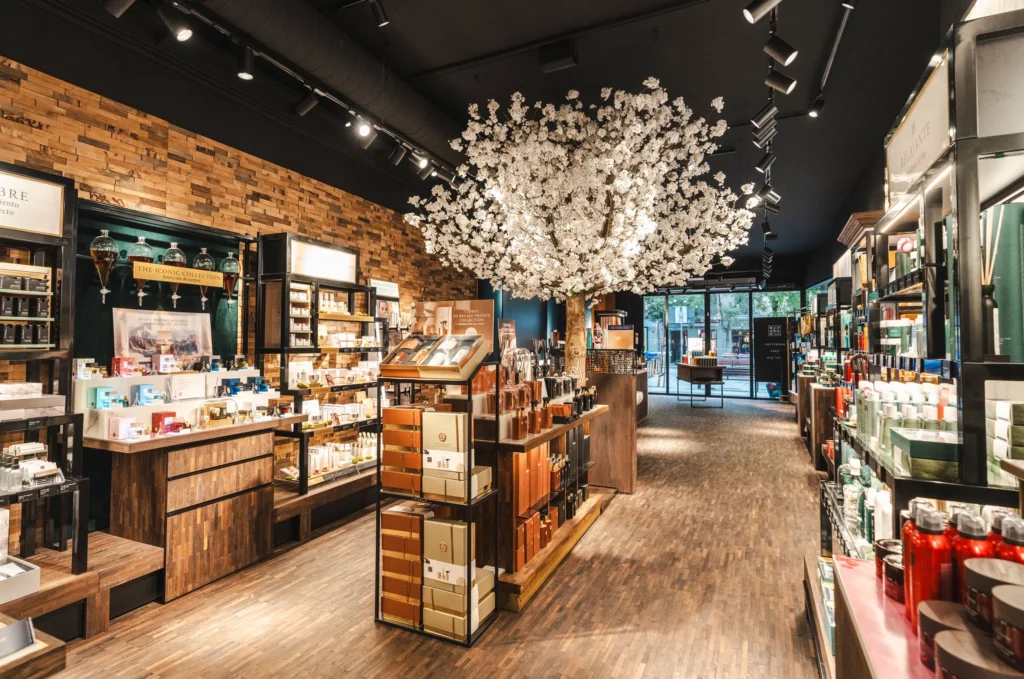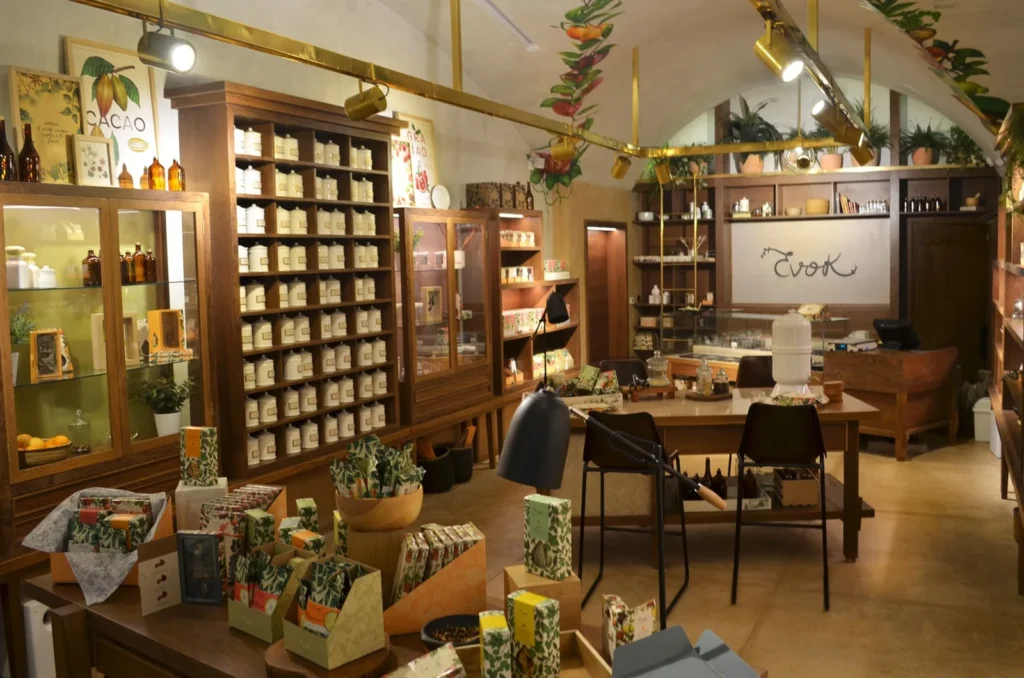In the world of design, brands are exploring new ways to connect with their consumers. This month, we have identified a strong trend toward sensorial design—a strategy that leverages colors, textures, sounds, and even scents to create memorable experiences and foster customer loyalty.
Why is it essential? Sensory design allows brands to stand out in a saturated market by stimulating the consumer’s senses. From packaging with unexpected textures to the use of fragrances in retail spaces, these techniques create emotional connections, drive engagement, and encourage word-of-mouth marketing.
 Case of study: Rituals
The wellness brand Rituals has seamlessly integrated sensory design throughout its brand experience. Its stores have a signature scent, the ambient music is soothing, and the texture of its packaging is carefully crafted to evoke a sense of luxury and tranquility.
Case of study: Rituals
The wellness brand Rituals has seamlessly integrated sensory design throughout its brand experience. Its stores have a signature scent, the ambient music is soothing, and the texture of its packaging is carefully crafted to evoke a sense of luxury and tranquility.
 A project of our own: Experiential design for Evok infusions
At ImasD, we worked on the design of an infusion brand that sought to transform the act of drinking tea into a multisensory experience. With Evok, we created a packaging system featuring bold messages, evocative illustrations, packaging that inspires a connection with nature, and a soft-touch texture—turning tea drinking into a pleasurable ritual for users. Beyond the packaging, we also designed the physical retail space and customer experience model, ensuring that every interaction reflected the brand’s essence from the very beginning.
What if we start incorporating circular design from the very first step of our creative process? Can you imagine the impact it could have on our business and the industry?
What would be the most optimal path forward? (Hint: Together, we can find the answer 😉)
A project of our own: Experiential design for Evok infusions
At ImasD, we worked on the design of an infusion brand that sought to transform the act of drinking tea into a multisensory experience. With Evok, we created a packaging system featuring bold messages, evocative illustrations, packaging that inspires a connection with nature, and a soft-touch texture—turning tea drinking into a pleasurable ritual for users. Beyond the packaging, we also designed the physical retail space and customer experience model, ensuring that every interaction reflected the brand’s essence from the very beginning.
What if we start incorporating circular design from the very first step of our creative process? Can you imagine the impact it could have on our business and the industry?
What would be the most optimal path forward? (Hint: Together, we can find the answer 😉)
 Case of study: Rituals
The wellness brand Rituals has seamlessly integrated sensory design throughout its brand experience. Its stores have a signature scent, the ambient music is soothing, and the texture of its packaging is carefully crafted to evoke a sense of luxury and tranquility.
Case of study: Rituals
The wellness brand Rituals has seamlessly integrated sensory design throughout its brand experience. Its stores have a signature scent, the ambient music is soothing, and the texture of its packaging is carefully crafted to evoke a sense of luxury and tranquility.
 A project of our own: Experiential design for Evok infusions
At ImasD, we worked on the design of an infusion brand that sought to transform the act of drinking tea into a multisensory experience. With Evok, we created a packaging system featuring bold messages, evocative illustrations, packaging that inspires a connection with nature, and a soft-touch texture—turning tea drinking into a pleasurable ritual for users. Beyond the packaging, we also designed the physical retail space and customer experience model, ensuring that every interaction reflected the brand’s essence from the very beginning.
What if we start incorporating circular design from the very first step of our creative process? Can you imagine the impact it could have on our business and the industry?
What would be the most optimal path forward? (Hint: Together, we can find the answer 😉)
A project of our own: Experiential design for Evok infusions
At ImasD, we worked on the design of an infusion brand that sought to transform the act of drinking tea into a multisensory experience. With Evok, we created a packaging system featuring bold messages, evocative illustrations, packaging that inspires a connection with nature, and a soft-touch texture—turning tea drinking into a pleasurable ritual for users. Beyond the packaging, we also designed the physical retail space and customer experience model, ensuring that every interaction reflected the brand’s essence from the very beginning.
What if we start incorporating circular design from the very first step of our creative process? Can you imagine the impact it could have on our business and the industry?
What would be the most optimal path forward? (Hint: Together, we can find the answer 😉)

